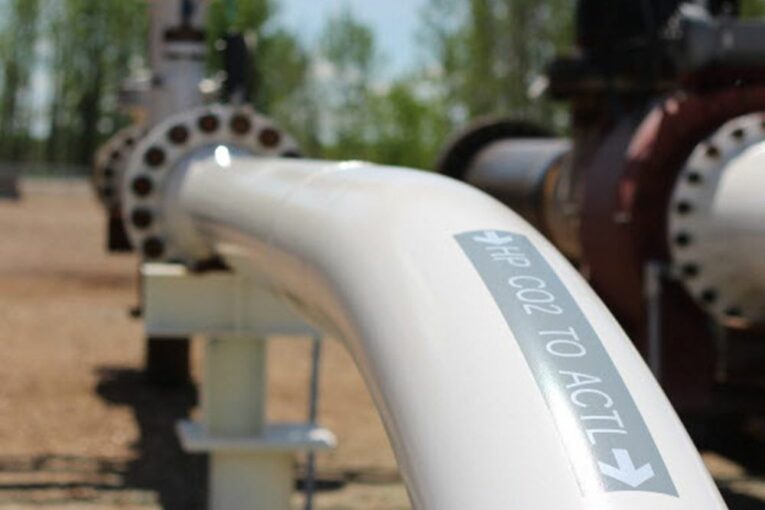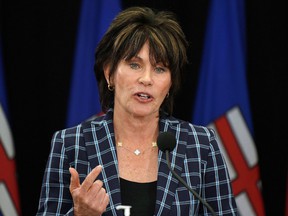
A marathon is about to begin to develop new carbon capture projects and storage hubs across Alberta, with companies at the starting line — and key decisions set to be made in the coming months that will reverberate for years.
Today, six of Canada’s largest oilsands producers are making progress on engineering and regulatory work for a plan to build a carbon capture network connected to at least eight facilities, part of a broader initiative to reach net-zero emissions by 2050.
Capital Power is evaluating plans for a carbon capture and storage project near its Genesee Generating Station west of Edmonton, and expects to make an investment decision on its $2.3-billion initiative by early 2023.
And Enhance Energy, which is already injecting CO2 shipped through the Alberta Carbon Trunk Line (ACTL) into an existing oilfield to boost recovery, will announce Wednesday plans for an open-access carbon sequestration hub in central Alberta.
The Origins Project aims to ship CO2 from a number of industrial developments close to the Highway 2 corridor, as well as in Alberta’s industrial heartland area, ending near Enhance’s operations at Clive for storage underground.
Enhance CEO Kevin Jabusch said the Calgary-based company is pitching the project — it could potentially store up to 20 million tonnes a year — as the province looks to select operators for new carbon hubs in Alberta.
“It is definitely a competitive process and it’s just starting,” Jabusch said in an interview.
“But how they do it, and what comes out of this, is critical.”
Under a provincial process, these hubs will be overseen by a private operator that will manage and provide access to subsurface formations — pore space — to enable carbon storage for industrial clients, according to provincial documents.
The push to build carbon capture and storage projects, along with necessary infrastructure, has been gaining momentum as Canada commits to reach net-zero emissions by 2050. Companies in heavy-emitting industries are searching for ways to lower their carbon footprint.
One potential solution is carbon capture, utilization and storage (CCUS). Such projects are expensive, although the escalating federal carbon price, ESG considerations and federal tax credits are expected to jump-start developments.
Alberta previously invested in the technology, with the former Progressive Conservative government putting more than $1 billion into two developments, including the Alberta Carbon Trunk Line.
A report by the International Energy Agency last week pointed out Canada is a “global leader in CCUS technologies,” with four of the world’s 26 commercial projects.
“There is a real opportunity here, between Canada and Alberta, to truly be a world leader,” said Capital Power CEO Brian Vaasjo.
Some environmental critics contend CCUS will simply extend the life of fossil fuels and question the technology’s cost and performance record. Others see it as part of a larger puzzle to lower Canada’s greenhouse gas emissions.
“CCUS definitely has a role, in terms of meeting net-zero in Canada,” said Chris Severson-Baker of the Pembina Institute. “It is certainly not a technological panacea by any means.”
Energy Minister Sonya Savage said initial expressions of interest gathered by the province last year for carbon sequestration rights attracted 48 submissions.
The province is now going through a request for proposals process to manage pore space in Alberta’s industrial heartland region near Edmonton, with a final selection to be announced by the end of March. A similar process for the Cold Lake area, and other regions, will follow, she said.
The province will likely select only one proponent to manage pore space in an area, while a number of regions could see sequestration hubs — probably less than a dozen, Savage said.
Proponents will be evaluated on a number of criteria, from their operational experience and commercial model to a project’s socio-economic benefits.
“You want one operator that would be responsible for the hub,” Savage said. “We have to make sure that we get it right as we move (forward) with further hubs.”

Some industry players want to see the province approve several such hubs within a region, increasing competition and situating them closer to industrial operations.
“It is critical how the government designs this,” said Jeff Pearson, president of Wolf Carbon Solutions, which owns and operates the Alberta Carbon Trunk Line.
“We’d like to see multiple projects granted in the Edmonton area, at least several projects. We think that’s best for emitters.”
Another critical element will come this year with details on a federal tax credit for CCUS projects, which was initially announced in last April’s budget. The province has said it wants to see more than $30 billion in federal incentives provided over a decade.
Project proponents are now busy at work to make their efforts a reality.
For the oilsands group, design and regulatory work is underway on a carbon capture network. It will connect a number of oilsands plants to a proposed carbon storage hub near Cold Lake.
“We’ve done a lot of work already and we have a project that is ready, pretty much ready to go,” said Al Reid, director of the Oilsands Pathways to Net Zero initiative, which includes companies such as Suncor Energy and Canadian Natural Resources.
Vaasjo said Capital Power’s carbon capture project has the potential to sequester up to three million tonnes of CO2 annually from repowered natural gas-generating units.
If built, the development would allow the company to capture up to 95 per cent of emissions from its units, with CO2 transported to an open-access carbon hub in the Wabamun area that pipeline giant Enbridge wants to develop.
“I see this project as being a home run,” Vaasjo said.
With large industrial operators looking to make major investments, existing infrastructure already in place, suitable geology in the province and years of technical experience in hand, Alberta has the ability to expand CCUS in a major way.
Pivotal decisions made in the coming months will determine just how big a role it will play in the province’s future.
Chris Varcoe is a Calgary Herald columnist.
You can read more of the news on source
